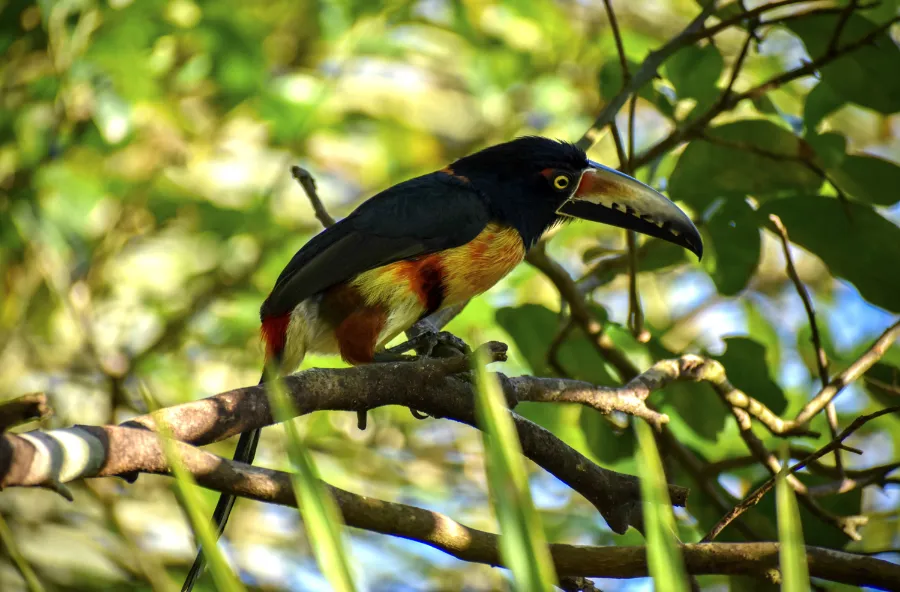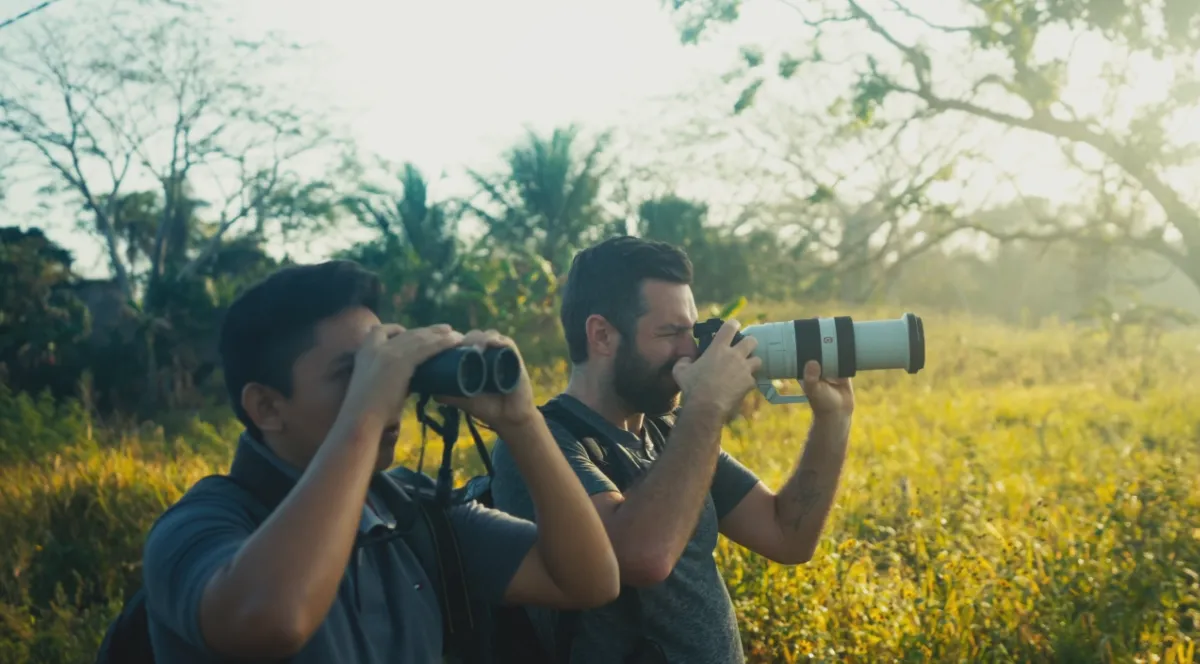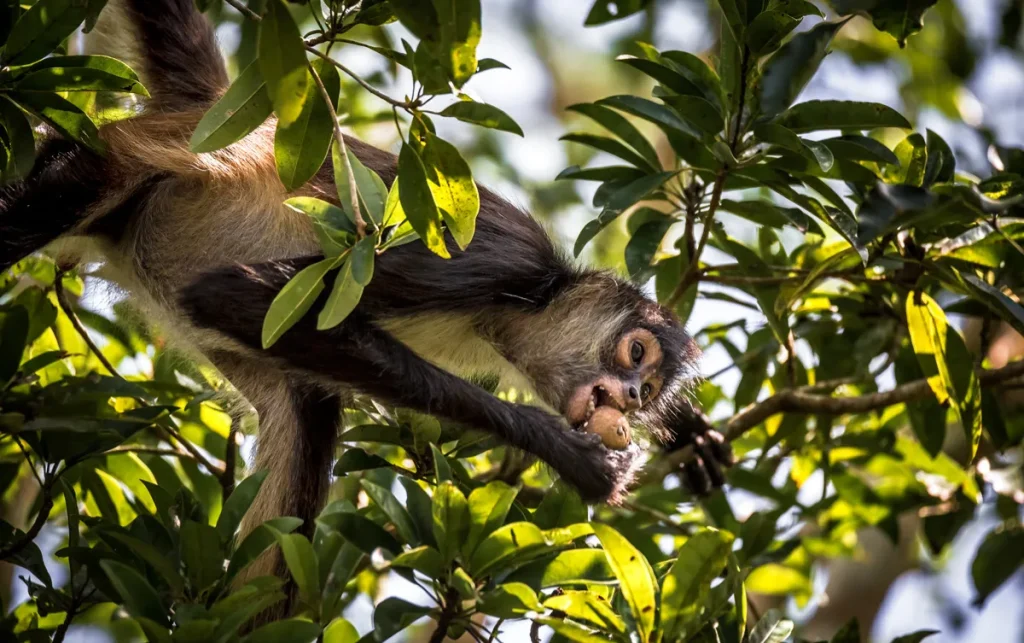Bird watching tours offer a unique opportunity to observe various bird species in their natural habitats. These tours can enhance the experience of nature enthusiasts and promote awareness of biodiversity. Popular destinations include Spain and Morocco, known for their rich avifauna. Participating in these tours not only provides enjoyment but also supports important conservation efforts.
Understanding Bird Watching Tours
Bird watching tours have gained traction as a way to engage with nature. These experiences cater to enthusiasts looking to enjoy the beauty of avifauna in various habitats.
What Is Bird Watching?
This activity involves observing birds in their natural environments, offering participants an opportunity to appreciate their behaviors and interactions. Bird watchers often use binoculars and field guides to identify different species. Sights can range from common backyard birds to rare migratory species, depending on the location and season.
Benefits of Bird Watching Tours
Participating in organized bird watching trips brings multiple advantages. Some of these include:
- Access to expert knowledge: Guides enhance the experience with insights on local ecosystems and bird behavior.
- Social interaction: Tours provide a chance to meet fellow birding enthusiasts, fostering community and shared experiences.
- Environmental education: Tours often include information on conservation efforts and the importance of preserving natural habitats.
- Unique access to prime locations: Joining a tour often allows entry to exclusive sites that may not be accessible to the general public.
In summary, understanding bird watching tours involves recognizing the value of immersive experiences that connect individuals with the avian world, while also promoting conservation awareness and fostering community ties.
Top Bird Watching Destinations
Exploring premier locations for bird watching can enhance the experience significantly. Spain, Morocco and Punta Laguna in México serve as exceptional destinations with abundant wildlife and unique species.
Bird Watching in Spain
Spain offers a wide variety of habitats, making it a prime location for bird enthusiasts. From wetlands to mountains, the country’s diverse ecosystems host numerous species.
Doñana National Park
This UNESCO World Heritage site is a crucial wetland area in Andalucía. It serves as a vital refuge for migratory birds. Observers can catch glimpses of iconic species such as:
- Flamingos
- Spoonbills
- Storks
Extremadura’s Rich Birdlife
Known for its vast plains and dehesas, Extremadura transforms into a major migration hub. During spring and autumn, birders can spot:
- Imperial eagles
- Black vultures
- Various migratory passerines
Pyrenees and Wildlife
The Pyrenees mountain range offers stunning landscapes and unique species. Birdwatchers can explore trails while spotting:
- Bearded vultures
- Golden eagles
- Wallcreepers
Exploring Morocco Birding
Marrakech and its surroundings boast a rich avifauna. Both local and migratory birds can be viewed across diverse ecological zones.
Key Bird Watching Locations
Prominent sites include:
- Merja Zerga, known for its flamingos
- Oukaimeden, where mountain birds gather
Unique Species You Can Find
Bird lovers visiting Morocco have the chance to observe several remarkable species, including:
- Bonelli’s eagle
- Levaillant’s cuckoo
- Various herons and waders
Bird Watching Tours in Costa Rica
Costa Rica is renowned for its rich biodiversity and exceptional birding opportunities. The country’s varied ecosystems provide an ideal backdrop for bird watching enthusiasts seeking unique species and vibrant natural settings.
Best Birding Locations
This captivating country boasts several top-notch birding spots, where hundreds of bird species can be observed.
- Monteverde Cloud Forest: Known for its misty atmosphere and diverse habitats, the cloud forest is home to the resplendent quetzal and various hummingbirds.
- Corcovado National Park: This remote park in the Osa Peninsula features tropical rainforests and is famous for its endangered species, including the scarlet macaw.
- Tortuguero National Park: Alongside its famous sea turtle conservation, this park offers a variety of bird habitats, inhabited by herons, kingfishers, and other unique species.
Guided and Private Tours Available
Many local operators provide guided bird watching tours tailored to different skill levels and interests. Professional guides enhance the experience by sharing vital insights about bird behavior and local ecology.
- Group Tours: Ideal for those looking to connect with fellow birders while exploring popular sites.
- Private Tours: These tours offer a personalized experience, allowing for flexibility in itinerary and pace.
Day Trips and Scheduled Tours Options
For those with limited time or wishing to see specific areas, day trips are an excellent option. Various operators offer well-structured itineraries that include transportation, meals, and expert guidance.
- Half-Day Tours: Perfect for beginners or those on a tight schedule, focusing on nearby hotspots.
- Full-Day Excursions: These in-depth tours provide an immersive birding experience in multiple locations.
Bird Watching Tours in Hawaii
Hawaii offers an exceptional experience for birding enthusiasts, boasting unique ecosystems and endemic species found nowhere else in the world.
Significant Birding Spots
Exploring Hawaii’s diverse landscapes reveals some of the best birding locations:
Hawaii Volcanoes National Park
This UNESCO World Heritage site is home to many endemic species, including the Hawaiian Honeycreepers, which are a must-see for any birdwatcher.
Kanaha Pond State Wildlife Sanctuary
Located on Maui, this sanctuary is crucial for migratory birds, providing a habitat for both native and visiting species.
Kauai’s Na Pali Coast
The rugged terrain of this area creates a unique environment for spotting the endangered Hawaiian ‘I‘iwi and other rare birds.
Tours and Guides for Enthusiasts
Various operators offer structured bird watching tours, catering to different interests and levels of experience:
Guided Tours
Guides with expertise in Hawaiian avifauna lead tours, sharing valuable insights about bird behavior and local ecology.
Private Birding Experiences
For those looking for a personalized experience, private tours can be tailored to specific preferences and desired bird species.
Day Trips
Day tours cover several essential spots, allowing bird watchers to maximize their chances of seeing diverse species.
Bird Watching Tours in México
An Immersive Birding Experience in Otoch Ma’ax Yetel Kooh
Embark on an immersive birdwatching tour with Eco Mayan Adventures into the heart of Punta Laguna, the protected jungle sanctuary of Otoch Ma’ax Yetel Kooh. This is more than a simple walk; it’s a sensory journey led by our expert local Mayan guides who have an intimate knowledge of the forest’s secrets, from the faintest bird calls to the subtlest rustle in the canopy. Our commitment to small, private groups ensures a quiet and respectful atmosphere, maximizing your chances of spotting elusive and vibrant species like the iconic Turquoise-browed Motmot, keel-billed toucans, and various colorful trogons in their natural habitat. By choosing this adventure, you not only connect deeply with nature but also directly support the local community that stewards and protects this vital ecosystem, making your experience both memorable and meaningful.
What Birds Can You Spot in Punta Laguna & Near Tulum?
The area surrounding Tulum and the protected reserve of Punta Laguna is a hotspot for Quintana Roo bird species, offering a spectacular mix of jungle and coastal avifauna. The diverse habitats, from dense jungle canopy to serene lagoon shores, mean a rich variety of birds can be observed year-round. An expert Yucatan birding guide is key to spotting them.
Featured Species: The Turquoise-browed Motmot
Often called the «pájaro reloj» (clock bird) for its unique tail-wagging motion, the Turquoise-browed Motmot is a true jewel of the Yucatan. With its vibrant turquoise crown and black facial mask, it’s a favorite for photographers. These stunning birds often nest in the limestone walls of cenotes, and our guides know their favorite perches, giving you an excellent chance to observe this iconic species of the Mayan Riviera avifauna.
Toucans, Trogons, and Woodpeckers of the Jungle Canopy
As you walk the jungle trails of Punta Laguna, keep your eyes and ears open for the residents of the high canopy. You may hear the distinctive call of the Keel-billed Toucan or see the flash of a Collared Aracari. The area is also home to elegant Trogons, like the Gartered Trogon, whose iridescent colors are a breathtaking sight against the green foliage. The rhythmic drumming of various woodpecker species, including the Golden-fronted Woodpecker, provides a constant soundtrack to your Tulum wildlife adventure.
Water Birds and Waders Near the Lagoon and Coast
The lagoon at Punta Laguna and the nearby coastal wetlands around Tulum attract a different set of feathered residents. Here, you can spot various herons and egrets, such as the Great Egret and Little Blue Heron, patiently hunting along the water’s edge. Look for the Neotropic Cormorant drying its wings in the sun or listen for the rattling call of the Belted Kingfisher as it dives for fish. This variety makes the region a complete destination for any birding enthusiast.
Led by Expert Local Mayan Guides
Our guides grew up in these forests. They don’t just identify birds from a book; they interpret the language of the jungle. They recognize calls, understand nesting behaviors, and can spot a bird that is perfectly camouflaged. They also share local Mayan folklore connected to the wildlife, adding a rich cultural layer to your tour that you won’t find anywhere else.
Small, Respectful Groups for Better Sightings
We believe in sustainable tourism. Large, noisy groups scare away wildlife and diminish the magic of the jungle. Our tours are always private or in very small groups. This ensures minimal disturbance to the environment and provides you with a peaceful, intimate experience, greatly increasing your chances of high-quality sightings and photo opportunities.
Supporting Community-Based Conservation
Punta Laguna is managed by a local Mayan cooperative. When you book this tour with us, a significant portion of the cost goes directly to this community, funding their conservation efforts and ensuring the jungle and its inhabitants are protected for future generations. Your adventure makes a direct, positive impact.
Planning Your Punta Laguna Birding Trip
A little preparation will ensure you have the best possible experience. Here are some expert tips for your visit.
Best Time of Day and Year for Birding
For the best activity, early morning is non-negotiable. Birds are most active and vocal in the first few hours after sunrise. While the Yucatan Peninsula offers great birding year-round, the migratory season (from October to April) brings an influx of species from North America. The dry season (November to April) typically offers the most pleasant weather for hiking.
What to Bring: Gear and Clothing Recommendations
- Binoculars: This is the single most important piece of gear. A pair with 8x or 10x magnification is ideal.
- Camera: A camera with a good zoom lens will help you capture your sightings.
- Comfortable Clothing: Wear lightweight, breathable long-sleeved shirts and pants. Neutral colors like khaki, green, or grey are best to blend in.
- Sturdy Footwear: Closed-toe walking shoes or hiking boots are a must for the jungle trails.
- Eco-Friendly Insect Repellent: Protect yourself from mosquitos while protecting the environment.
- Hat, Sunglasses, and Sunscreen: The Yucatan sun is strong, even in the shade.
- Reusable Water Bottle: Staying hydrated is key. We provide purified water for refills.
Sample Tour Itinerary & What to Expect
A typical tour begins with an early morning pickup from your hotel in Tulum. Upon arrival at Punta Laguna, you’ll meet your local guide and begin a gentle hike through the jungle trails, stopping frequently to observe and identify birds. The experience often includes a canoe paddle across the serene lagoon, offering a different vantage point for spotting water birds. After a few hours of immersive exploration, we will transport you back, leaving you with incredible memories and photos.
Bird Watching Tours in Alaska
Alaska, renowned for its breathtaking landscapes, is a paradise for bird watchers. From majestic glaciers to vast tundras, the state offers diverse ecosystems teeming with unique avian species.
Unique Birds and Wildlife
The avifauna of Alaska includes numerous species that attract bird watching enthusiasts from around the world. Some notable birds include:
- Bald Eagles, known for their impressive wingspans and soaring flight.
- Arctic Terns, recognized for their long migrations between the Arctic and Antarctic.
- Snowy Owls, which can often be spotted in the winter months.
- Common Eiders, featuring striking plumage in both males and females.
In addition to avian species, Alaska’s wildlife includes moose, bears, and caribou, offering a well-rounded wildlife experience.
Best Times for Birding Visits
The best periods for bird watching in Alaska vary based on the species and their migratory patterns. Peak times include:
- Spring (May to early June) for migratory birds returning to nest.
- Summer (June to August) when many birds are active and raising their young.
- Fall (September to October) when migratory birds prepare for their journeys south.
Winter provides opportunities to see resident species and unique winter behaviors.
Exciting Birding Day Trips
Numerous guided day trips are available across various regions of Alaska, catering to different skill levels. Popular options include:
- Kenai Peninsula, known for easily accessible wildlife spots.
- Wrangell-St. Elias National Park, offering remote birding experiences.
- Augustine Island, famous for seabird colonies and coastal views.
These tours often include knowledgeable guides who enhance the bird watching experience with their expertise.
Organizing a Successful Birding Tour
Planning a successful birding tour involves careful consideration and some essential steps. Each detail contributes to the overall experience and can greatly enhance the enjoyment of observing nature in its purest form.
Choosing the Right Travel Agency
Selecting the correct travel agency can make all the difference in a birding tour. Look for agencies that specialize in nature and wildlife tours, as they will have experienced guides and a deeper understanding of local birding hotspots. Consider the following:
- Check for online reviews and testimonials from previous participants.
- Verify their credentials and expertise in birdwatching.
- Inquire about the flexibility of their tour packages.
Tips for Participating in Birding Tours
To enhance the birdwatching experience, participants should prepare adequately. Adhering to certain tips can help both novice and seasoned birders:
- Wear appropriate clothing and footwear for long periods outdoors.
- Bring binoculars and a field guide to assist with species identification.
- Stay patient and quiet to avoid disturbing wildlife.
What to Know Before You Go
Preparation extends beyond packing equipment. Understanding logistical aspects is vital for a smooth tour:
- Be aware of the best times for birdwatching at your selected destination.
- Familiarize yourself with the bird species you may encounter.
- Understand the ecological significance of the areas being visited.
How Birding Supports Conservation
Birding plays a vital role in conservation efforts around the world. By engaging with nature, enthusiasts contribute to the protection of bird species and their habitats, promoting awareness and responsibility toward environmental stewardship.
Impact on Local Environments
The presence of bird watchers in various ecosystems can positively influence local environments in several ways:
- Financial Support: Birding tours generate revenue that can be used for habitat preservation and wildlife protection.
- Awareness Raising: Education about local biodiversity encourages communities to value and protect their natural resources.
- Conservation Partnerships: Collaboration between tour operators and conservation organizations can lead to successful habitat restoration projects.
Bird watchers also provide essential data on species populations and migration patterns, which can be invaluable for researchers and conservationists.
Responsible Bird Watching Practices
Engaging in birding responsibly is critical to minimizing its impact on nature. Some key practices include:
- Staying on designated trails to protect native flora and minimize disturbances to wildlife.
- Respecting nesting seasons by avoiding sensitive areas and following local guidelines.
- Using binoculars instead of getting too close to birds, ensuring their natural behavior is preserved.
By adopting these practices, birders support the health of ecosystems while enjoying their passion for observing wildlife.
Resources and Further Information
For those looking to deepen their understanding of bird watching, a range of resources is available to enhance the experience.
Trip Reports and Reviews
Trip reports and reviews serve as valuable insights into various bird watching locations. Enthusiasts often share their experiences, detailing the species observed, the best times to visit, and recommendations for tour operators. These reports can be found on multiple platforms, including:
- Birding websites
- Social media groups
- Online forums dedicated to birding
Reading through these personal accounts can help potential travelers design their itineraries and set realistic expectations for their bird watching adventures.
Blogs and Online Communities for Bird Watchers
Numerous blogs provide ongoing discussions about bird watching, covering everything from gear reviews to specific bird behavior. Popular online communities offer a space for enthusiasts to connect, share tips, and ask questions. Notable platforms include:
- Birding forums
- Facebook groups focused on local bird watching
- Dedicated blogs run by experienced birders
These resources not only promote education but also foster a sense of community among bird watchers, encouraging interactions across geographical boundaries.












